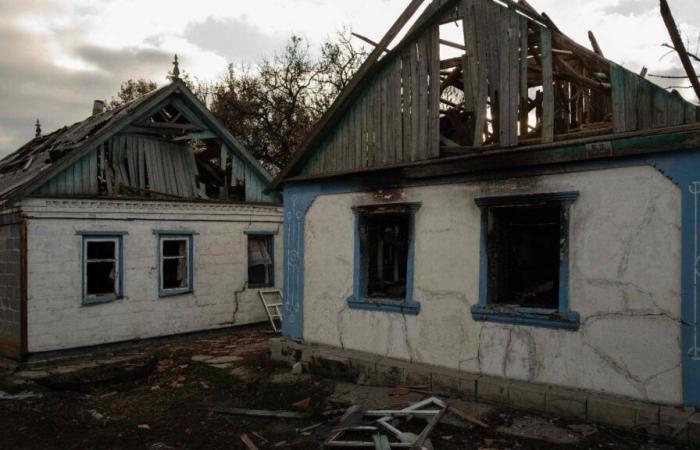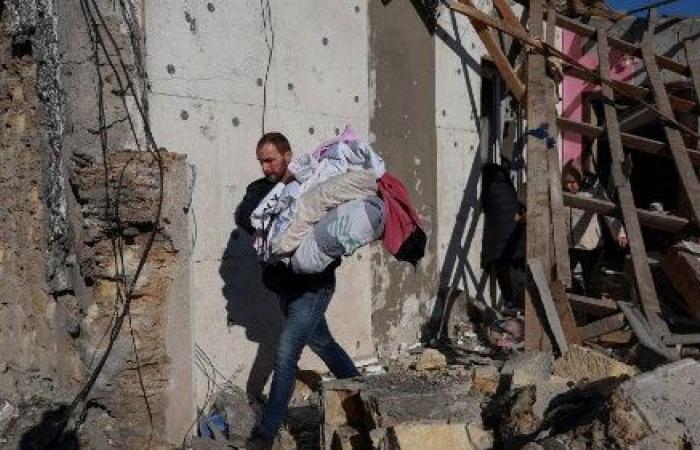A thousand days after the start of the war in Ukraine, it is still very difficult to establish the precise number of victims, both civilian and military. According to the most reliable estimates, hundreds of thousands of people have died and nearly eleven million are displaced or refugees.
Guglielmo Gallone – Vatican City
Behind the 1000 days that have passed since the start of the war in Ukraine lie many numbers, capable of dictating time and tearing apart the space in which a conflict takes place, capable of shattering lives and destroying dreams. These are often hidden figures, because war is also waged through information. First of all, there is the most difficult to estimate because it is the most hidden: the number of victims. In September, le Wall Street Journalciting intelligence sources, wrote that approximately one million Ukrainians and Russians have been killed or injured since February 24, 2022. The majority of them are soldiers from both sides, followed by Ukrainian civilians. The same month, the BBC and the independent website Mediazona found the obituaries of 70,000 Russian fighters who died in Ukraine – 20% of them were volunteers. The figures provided by the Wall Street Journal seem to correspond to what le New York Times had declared a year earlier – in August 2023 – that the war had so far caused around 500,000 casualties.
On the other hand, a figure that achieves consensus, notably thanks to the role of the United Nations refugee agency (UNHCR), concerns displaced people: 6.7 million Ukrainians have found refuge outside the country, while that there are nearly 4 million internally displaced people in the country. When we know that in August, a single attack left 184 civilians dead and 856 injured, we understand that flight could be the only solution for these people.
On the other hand, infrastructures are not spared from military operations. The bombings damaged 3,798 schools and 356 of them were destroyed. In more than two years, 1,619 health facilities have been damaged and 214 others razed – among the worst affected are those in Kharkiv Oblast, Donetsk, Mykolaiv, kyiv, Kherson and Zaporizhia.
The war has already affected 20% of protected areas in Ukraine, where the Russian army has occupied eight nature reserves and ten national parks. Detonations of bombs, missiles and other explosives hinder plant growth by approximately 5-10%. Air quality has also deteriorated, affected by activities such as the use of vehicles, aircraft, drones and fossil fuels, which increase emissions of greenhouse gases and pollutants such as ammonia, carbon monoxide, sulfur dioxide and nitrogen oxides.
All of this has an impact on Ukraine’s national economy, which historically relies on agriculture. Considered a few years ago as the “attic of the world” because it exported 20% of the world’s wheat and 45% of the world’s sunflower oil, kyiv has today lost almost all its commercial strength, partly due to the bombing of Black Sea ports. The effects on food prices have been considerable, fueling inflation in Europe and undermining food chains in African countries. Additionally, due to the electricity shortage, Ukraine has started dismantling its thermal power plants to salvage parts needed to repair other power plants.
And the national economy suffers. In September, inflation jumped to 8.6% (+1.5% month-on-month) due to rising food prices, increased production spending and continued pressure from the depreciation of the national currency. Although the country is depopulating, the unemployment rate in October remains above 15% and the poverty indicator – that is, the number of people forced to save on food – stands at 20%. . Despite this, Ukrainian state budget revenues were used to finance defense. Civil expenses, for their part, were covered by external aid.
Figures behind which hide stories behind which hide people who tell of the tragic humanity of the most inhumane act that can exist, war.









